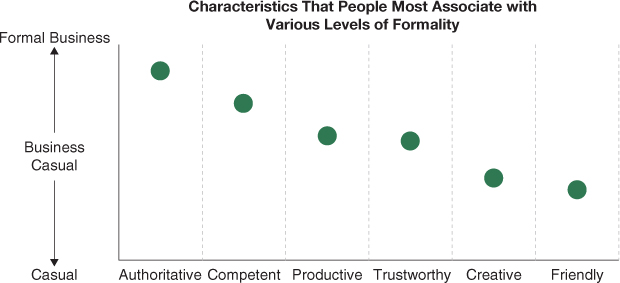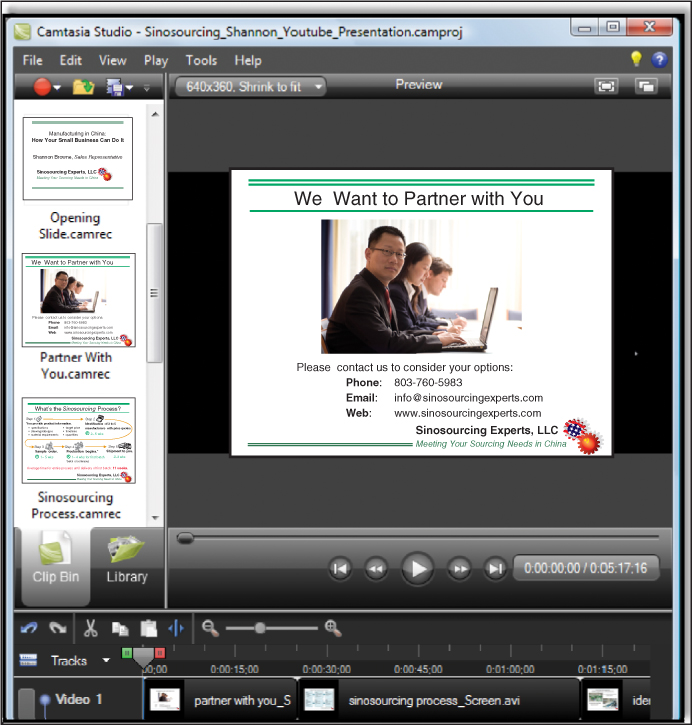Deepfakes and the New
Disinformation War
The Coming Age of Post-Truth Geopolitics
By Robert Chesney and Danielle Citron
A picture may be worth a thousand words, but there is nothing that persuades quite like an
audio or video recording of an event. At a time when partisans can barely agree on facts, such
persuasiveness might seem as if it could bring a welcome clarity. Audio and video recordings
allow people to become firsthand witnesses of an event, sparing them the need to decide
whether to trust someone else’s account of it. And thanks to smartphones, which make it easy
to capture audio and video content, and social media platforms, which allow that content to
be shared and consumed, people today can rely on their own eyes and ears to an
unprecedented degree.
Therein lies a great danger. Imagine a video depicting the Israeli prime minister in private
conversation with a colleague, seemingly revealing a plan to carry out a series of political
assassinations in Tehran. Or an audio clip of Iranian officials planning a covert operation to
kill Sunni leaders in a particular province of Iraq. Or a video showing an American general in
Afghanistan burning a Koran. In a world already primed for violence, such recordings would
have a powerful potential for incitement. Now imagine that these recordings could be faked
using tools available to almost anyone with a laptop and access to the Internet—and that the
resulting fakes are so convincing that they are impossible to distinguish from the real thing.
Advances in digital technology could soon make this nightmare a reality. Thanks to the rise
of “deepfakes”—highly realistic and difficult-to-detect digital manipulations of audio or
video—it is becoming easier than ever to portray someone saying or doing something he or
she never said or did. Worse, the means to create deepfakes are likely to proliferate quickly,
producing an ever-widening circle of actors capable of deploying them for political purposes.
Disinformation is an ancient art, of course, and one with a renewed relevance today. But as
deepfake technology develops and spreads, the current disinformation wars may soon look
like the propaganda equivalent of the era of swords and shields.
DAWN OF THE DEEPFAKES
Deepfakes are the product of recent advances in a form of artificial intelligence known as
“deep learning,” in which sets of algorithms called “neural networks” learn to infer rules and
replicate patterns by sifting through large data sets. (Google, for instance, has used this
technique to develop powerful image-classification algorithms for its search engine.)
Deepfakes emerge from a specific type of deep learning in which pairs of algorithms are
pitted against each other in “generative adversarial networks,” or GANS. In a GAN, one
algorithm, the “generator,” creates content modeled on source data (for instance, making
artificial images of cats from a database of real cat pictures), while a second algorithm, the
“discriminator,” tries to spot the artificial content (pick out the fake cat images). Since each
algorithm is constantly training against the other, such pairings can lead to rapid
improvement, allowing GANS to produce highly realistic yet fake audio and video content.
This technology has the potential to proliferate widely. Commercial and even free deepfake
services have already appeared in the open market, and versions with alarmingly few
safeguards are likely to emerge on the black market. The spread of these services will lower
the barriers to entry, meaning that soon, the only practical constraint on one’s ability to
produce a deepfake will be access to training materials—that is, audio and video of the
person to be modeled—to feed the GAN. The capacity to create professional-grade forgeries
will come within reach of nearly anyone with sufficient interest and the knowledge of where
to go for help.
Deepfakes have a number of worthy applications. Modified audio or video of a historical
figure, for example, could be created for the purpose of educating children. One company
even claims that it can use the technology to restore speech to individuals who have lost their
voice to disease. But deepfakes can and will be used for darker purposes, as well. Users have
already employed deepfake technology to insert people’s faces into pornography without
their consent or knowledge, and the growing ease of making fake audio and video content
will create ample opportunities for blackmail, intimidation, and sabotage. The most
frightening applications of deepfake technology, however, may well be in the realms of
politics and international affairs. There, deepfakes may be used to create unusually effective
lies capable of inciting violence, discrediting leaders and institutions, or even tipping
elections.
Social media will be fertile ground for circulating deepfakes, with explosive
implications for politics.
Deepfakes have the potential to be especially destructive because they are arriving at a time
when it already is becoming harder to separate fact from fiction. For much of the twentieth
century, magazines, newspapers, and television broadcasters managed the flow of
information to the public. Journalists established rigorous professional standards to control
the quality of news, and the relatively small number of mass media outlets meant that only a
limited number of individuals and organizations could distribute information widely. Over
the last decade, however, more and more people have begun to get their information from
social media platforms, such as Facebook and Twitter, which depend on a vast array of users
to generate relatively unfiltered content. Users tend to curate their experiences so that they
mostly encounter perspectives they already agree with (a tendency heightened by the
platforms’ algorithms), turning their social media feeds into echo chambers. These platforms
are also susceptible to so-called information cascades, whereby people pass along
information shared by others without bothering to check if it is true, making it appear more
credible in the process. The end result is that falsehoods can spread faster than ever before.
These dynamics will make social media fertile ground for circulating deepfakes, with
potentially explosive implications for politics. Russia’s attempt to influence the 2016 U.S.
presidential election—spreading divisive and politically inflammatory messages on Facebook
and Twitter—already demonstrated how easily disinformation can be injected into the social
media bloodstream. The deepfakes of tomorrow will be more vivid and realistic and thus
more shareable than the fake news of 2016. And because people are especially prone to
sharing negative and novel information, the more salacious the deepfakes, the better.
DEMOCRATIZING FRAUD
The use of fraud, forgery, and other forms of deception to influence politics is nothing new,
of course. When the USS Maine exploded in Havana Harbor in 1898, American tabloids used
misleading accounts of the incident to incite the public toward war with Spain. The anti-
Semitic tract Protocols of the Elders of Zion, which described a fictional Jewish conspiracy,
circulated widely during the first half of the twentieth century. More recently, technologies
such as Photoshop have made doctoring images as easy as forging text. What makes
deepfakes unprecedented is their combination of quality, applicability to persuasive formats
such as audio and video, and resistance to detection. And as deepfake technology spreads, an
ever-increasing number of actors will be able to convincingly manipulate audio and video
content in a way that once was restricted to Hollywood studios or the most well-funded
intelligence agencies.
Deepfakes will be particularly useful to nonstate actors, such as insurgent groups and terrorist
organizations, which have historically lacked the resources to make and disseminate
fraudulent yet credible audio or video content. These groups will be able to depict their
adversaries—including government officials—spouting inflammatory words or engaging in
provocative actions, with the specific content carefully chosen to maximize the galvanizing
impact on their target audiences. An affiliate of the Islamic State (or ISIS), for instance, could
create a video depicting a U.S. soldier shooting civilians or discussing a plan to bomb a
mosque, thereby aiding the terrorist group’s recruitment. Such videos will be especially
difficult to debunk in cases where the target audience already distrusts the person shown in
the deepfake. States can and no doubt will make parallel use of deepfakes to undermine their
nonstate opponents.
Deepfakes will also exacerbate the disinformation wars that increasingly disrupt domestic
politics in the United States and elsewhere. In 2016, Russia’s state-sponsored disinformation
operations were remarkably successful in deepening existing social cleavages in the United
States. To cite just one example, fake Russian accounts on social media claiming to be
affiliated with the Black Lives Matter movement shared inflammatory content purposely
designed to stoke racial tensions. Next time, instead of tweets and Facebook posts, such
disinformation could come in the form of a fake video of a white police officer shouting
racial slurs or a Black Lives Matter activist calling for violence.
Perhaps the most acute threat associated with deepfakes is the possibility that a well-timed
forgery could tip an election. In May 2017, Moscow attempted something along these lines.
On the eve of the French election, Russian hackers tried to undermine the presidential
campaign of Emmanuel Macron by releasing a cache of stolen documents, many of them
doctored. That effort failed for a number of reasons, including the relatively boring nature of
the documents and the effects of a French media law that prohibits election coverage in the
44 hours immediately before a vote. But in most countries, most of the time, there is no
media blackout, and the nature of deepfakes means that damaging content can be guaranteed
to be salacious or worse. A convincing video in which Macron appeared to admit to
corruption, released on social media only 24 hours before the election, could have spread like
wildfire and proved impossible to debunk in time.
Deepfakes may also erode democracy in other, less direct ways. The problem is not just that
deepfakes can be used to stoke social and ideological divisions. They can create a “liar’s
dividend”: as people become more aware of the existence of deepfakes, public figures caught
in genuine recordings of misbehavior will find it easier to cast doubt on the evidence against
them. (If deepfakes were prevalent during the 2016 U.S. presidential election, imagine how
much easier it would have been for Donald Trump to have disputed the authenticity of the
infamous audiotape in which he brags about groping women.) More broadly, as the public
becomes sensitized to the threat of deepfakes, it may become less inclined to trust news in
general. And journalists, for their part, may become more wary about relying on, let alone
publishing, audio or video of fast-breaking events for fear that the evidence will turn out to
have been faked.
DEEP FIX
There is no silver bullet for countering deepfakes. There are several legal and technological
approaches—some already existing, others likely to emerge—that can help mitigate the
threat. But none will overcome the problem altogether. Instead of full solutions, the rise of
deepfakes calls for resilience.
Three technological approaches deserve special attention. The first relates to forensic
technology, or the detection of forgeries through technical means. Just as researchers are
putting a great deal of time and effort into creating credible fakes, so, too, are they
developing methods of enhanced detection. In June 2018, computer scientists at Dartmouth
and the University at Albany, SUNY, announced that they had created a program that detects
deepfakes by looking for abnormal patterns of eyelid movement when the subject of a video
blinks. In the deepfakes arms race, however, such advances serve only to inform the next
wave of innovation. In the future, GANS will be fed training videos that include examples of
normal blinking. And even if extremely capable detection algorithms emerge, the speed with
which deepfakes can circulate on social media will make debunking them an uphill battle. By
the time the forensic alarm bell rings, the damage may already be done.
A second technological remedy involves authenticating content before it ever spreads—an
approach sometimes referred to as a “digital provenance” solution. Companies such as
Truepic are developing ways to digitally watermark audio, photo, and video content at the
moment of its creation, using metadata that can be logged immutably on a distributed ledger,
or blockchain. In other words, one could effectively stamp content with a record of
authenticity that could be used later as a reference to compare to suspected fakes.
In theory, digital provenance solutions are an ideal fix. In practice, they face two big
obstacles. First, they would need to be ubiquitously deployed in the vast array of devices that
capture content, including laptops and smartphones. Second, their use would need to be made
a precondition for uploading content to the most popular digital platforms, such as Facebook,
Twitter, and YouTube. Neither condition is likely to be met. Device makers, absent
some legal or regulatory obligation, will not adopt digital authentication until they know it is
affordable, in demand, and unlikely to interfere with the performance of their products. And
few social media platforms will want to block people from uploading unauthenticated
content, especially when the first one to do so will risk losing market share to less rigorous
competitors.
A third, more speculative technological approach involves what has been called
“authenticated alibi services,” which might soon begin emerging from the private sector.
Consider that deepfakes are especially dangerous to high-profile individuals, such as
politicians and celebrities, with valuable but fragile reputations. To protect themselves
against deepfakes, some of these individuals may choose to engage in enhanced forms of
“lifelogging”—the practice of recording nearly every aspect of one’s life—in order to prove
where they were and what they were saying or doing at any given time. Companies might
begin offering bundles of alibi services, including wearables to make lifelogging convenient,
storage to cope with the vast amount of resulting data, and credible authentication of those
data. These bundles could even include partnerships with major news and social media
platforms, which would enable rapid confirmation or debunking of content.
Such logging would be deeply invasive, and many people would want nothing to do with it.
But in addition to the high-profile individuals who choose to adopt lifelogging to protect
themselves, some employers might begin insisting on it for certain categories of employees,
much as police departments increasingly require officers to use body cameras. And even if
only a relatively small number of people took up intensive lifelogging, they would produce
vast repositories of data in which the rest of us would find ourselves inadvertently caught,
creating a massive peer-to-peer surveillance network for constantly recording our activities.
LAYING DOWN THE LAW
If these technological fixes have limited upsides, what about legal remedies? Depending on
the circumstances, making or sharing a deepfake could constitute defamation, fraud, or
misappropriation of a person’s likeness, among other civil and criminal violations. In theory,
one could close any remaining gaps by criminalizing (or attaching civil liability to) specific
acts—for instance, creating a deepfake of a real person with the intent to deceive a viewer or
listener and with the expectation that this deception would cause some specific kind of harm.
But it could be hard to make these claims or charges stick in practice. To begin with, it will
likely prove very difficult to attribute the creation of a deepfake to a particular person or
group. And even if perpetrators are identified, they may be beyond a court’s reach, as in the
case of foreign individuals or governments.
Another legal solution could involve incentivizing social media platforms to do more to
identify and remove deepfakes or fraudulent content more generally. Under current U.S. law,
the companies that own these platforms are largely immune from liability for the content they
host, thanks to Section 230 of the Communications Decency Act of 1996. Congress could
modify this immunity, perhaps by amending Section 230 to make companies liable for
harmful and fraudulent information distributed through their platforms unless they have made
reasonable efforts to detect and remove it. Other countries have used a similar approach for a
different problem: in 2017, for instance, Germany passed a law imposing stiff fines on social
media companies that failed to remove racist or threatening content within 24 hours of it
being reported.
Yet this approach would bring challenges of its own. Most notably, it could lead to excessive
censorship. Companies anxious to avoid legal liability would likely err on the side of policing
content too aggressively, and users themselves might begin to self-censor in order to avoid
the risk of having their content suppressed. It is far from obvious that the notional benefits of
improved fraud protection would justify these costs to free expression. Such a system would
also run the risk of insulating incumbent platforms, which have the resources to police
content and pay for legal battles, against competition from smaller firms.
LIVING WITH LIES
But although deepfakes are dangerous, they will not necessarily be disastrous. Detection will
improve, prosecutors and plaintiffs will occasionally win legal victories against the creators
of harmful fakes, and the major social media platforms will gradually get better at flagging
and removing fraudulent content. And digital provenance solutions could, if widely adopted,
provide a more durable fix at some point in the future.
In the meantime, democratic societies will have to learn resilience. On the one hand, this will
mean accepting that audio and video content cannot be taken at face value; on the other, it
will mean fighting the descent into a post-truth world, in which citizens retreat to their private
information bubbles and regard as fact only that which flatters their own beliefs. In short,
democracies will have to accept an uncomfortable truth: in order to survive the threat of
deepfakes, they are going to have to learn how to live with lies.







